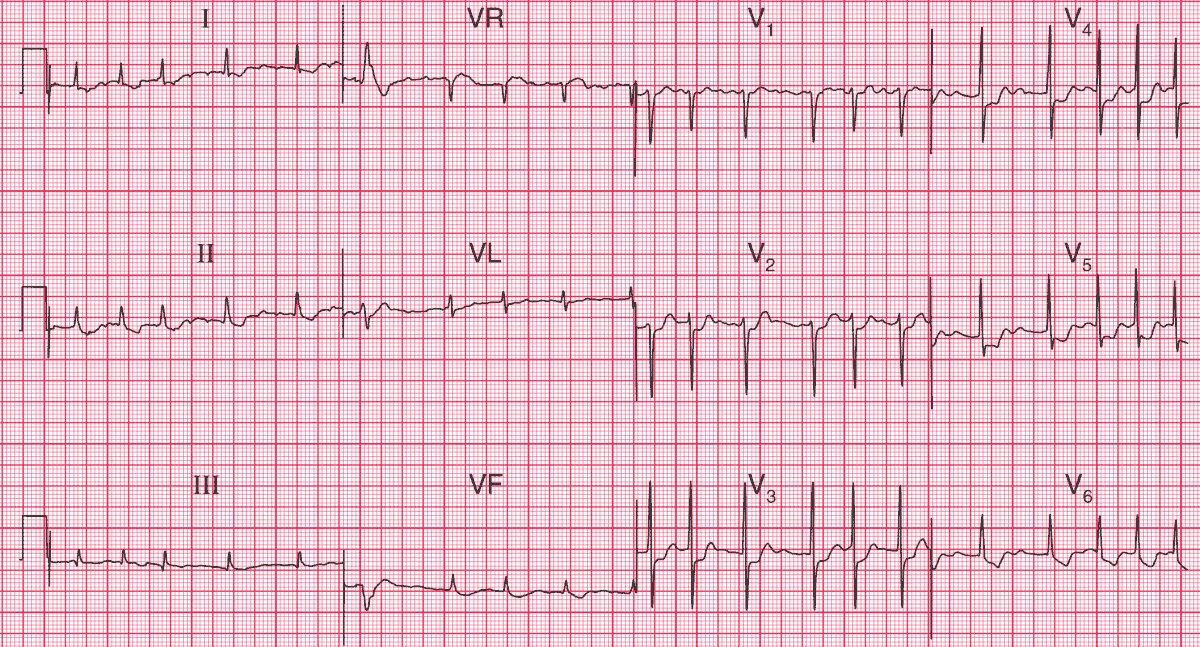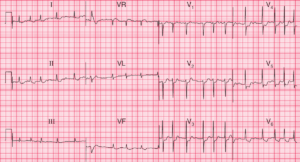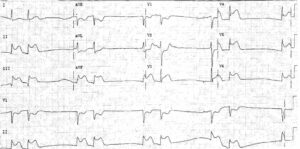This post is an interpretation of the ECG Case 59
ECG Interpretation
- Atrial Fibrillation with Rapid Ventricular Response (RVR)
- Average ventricular rate 120/min
- Normal axis
- Normal QRS complexes
- Diffuse ST segment depression in leads V2–V6, I, II, aVF, aVL
- Reciprocal ST elevation in lead aVR

Clinical Interpretation
The diffuse ST segment depression indicates subendocardial ischemia that could be due to:
- Three vessel disease (3VD)
- Left main artery stenosis
- Demand Ischemia (from hypoxia, anemia, shock, sepsis, PE, trachyarrhythmias, etc)
In this case the subendocardial ischemia is probably due to supply/demand mismatch (low supply because of the heart failure and high demand because of the atrial fibrillation with rapid ventricular response)
This patient needs rate control with drugs to reduce the heart rate and to see if the ST depression resolves. If it doesn’t resolve, other causes should be sought out.
READ MORE about: Management of Atrial Fibrillation (AF) with Rapid Ventricular Response (RVR)



![Read more about the article Conduction Blocks at the AV Node (AV Blocks) [With Examples]](https://manualofmedicine.com/wp-content/uploads/2021/05/Excerpt-AV-Blocks-300x243.jpg)